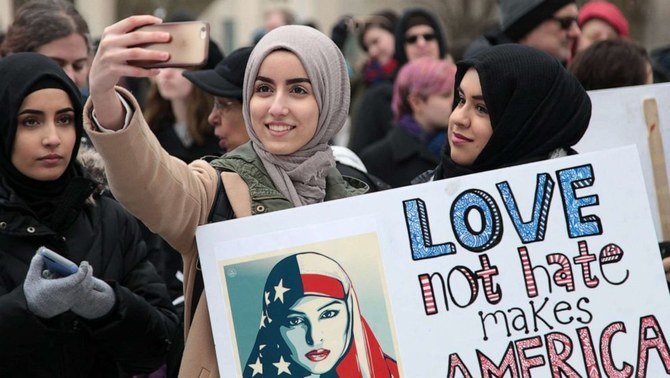Ray Hanania
The ongoing celebration of April as Arab American Heritage Month is a reflection of how far the community has come. However, it is also a reflection of how far Arabs in America still need to go. Celebrating Arab American heritage was an idea that slowly evolved among Arab Americans as the community grew and as a natural response to the increasing anti-Arab discrimination in the US.
The first Arab to arrive in America – according to the official website of the State Department, which in recent years has expanded its acknowledgement of racial diversity to include Arabs – was Moroccan Estebanico Azemmouri in 1527. He was followed by Antonio Bishallany, who arrived from Lebanon. So, it is no surprise that Morocco later became the first Arab nation to recognize America after it declared its independence in 1776 or that the Lebanese American community is today not only the oldest and largest Arab group in the US but also the most engaged in American society. Living in America is not easy for immigrants and it has certainly not been easy for Arabs. Negative stereotypes of Arabs quickly morphed into racist depictions in the American media, including in books and newspapers, on television and radio and in Hollywood movies.
It did not help that the term “Arab” was inherently challenged by its own people, who had differences emanating from their 22 countries of origin. Egypt’s Gamal Abdul Nasser tried to correct that and create an Arab nation in the 1960s, but the idea drifted away after the defeat by Israel in the Six-Day War. Arab diversity is one reason why there is an ongoing debate on how to count the number of people from the Arab world or Middle East in the US Census. Being included in the census triggers laws that strengthen the voting and political rights of minority groups, while also mandating the distribution of federal money to strengthen their empowerment. However, Arabs are not included, leaving them in a state of limbo in which they are easily targeted by haters, marginalized by the government, and denied funding. The word “Arab” has become a so-called four-letter word – a phrase used to reflect disgust rather than a source of pride to be shared with other Americans in a nation that claims to be based on diversity and an empathy for immigrants. Yes, things have gotten better since 1972, when President Richard Nixon launched Operation Boulder, which was intended to monitor the immigration of “subversives” and individuals seen as threats to America. It was later expanded to target Arabs. Most Arabs in America were targeted by this surveillance.
In the meantime, fear of Arabs was being fanned by the anti-Arab themes that dominated the Hollywood movie industry. Of course, Hollywood has portrayed many ethnic and racial groups in a negative way. But for most of these victims of racism, Hollywood also included positive role models and characters to balance the stereotypes. It is only very recently that Arabs have started to see a few positive Hollywood characters. Even today, as 45 states recognize Arab American Heritage Month, five states do not. And some 26 states have passed laws targeting Arab American activism by making support for the Boycott, Divestment and Sanction movement illegal. While Joe Biden last year became the first US president to officially recognize Arab American Heritage Month, only one state – Illinois – has passed a law officially designating April as such.
Biden has also appointed more than two dozen Arab Americans to serve in his administration, filling a gap that had put Arabs at a disadvantage for many years. But those appointees have been prevented from making public statements about America’s Middle East policy. They have also had to “cleanse” their social media accounts of unpopular opinions and are rarely allowed to speak on the record. I am not sure if that is really an achievement – to have more Arabs working for the US government while keeping their political views muzzled. Although the mainstream news media celebrates the heritage months of African Americans, Hispanics, Asians, Native Americans and others, there is very little acknowledgement of Arab heritage during Arab American Heritage Month. Racism against Arabs still exists in America. It is compounded by the multifariousness of the Arab people – 22 different nationalities along with even more diverse subgroups that all celebrate their own individuality. Although Egyptians, Jordanians, Palestinians and Saudis all see themselves as having distinct identities, Americans do not. America sees us all as the same, even including people from South Asia and others who share our features and our dominant religion of Islam.
The Arab American community needs to recognize this challenge and stress its identity as being Arab, not as being from the Middle East and North Africa. We should not contribute to America’s uneducated and uninformed approach to Arab culture and ethnicity. Until we stand up as Arabs, we will always be pushed down by negative stereotypes. Arab American Heritage Month is a moment of pride. But it is only a start.
Arab News







